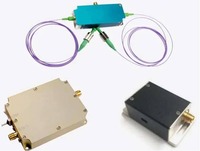Categories
Tags
-
#Waste Oil to Diesel
#Land Rig Installation
#Used Engine Oil Recycling
#Transformer Oil Dehydration
#Sodium Fusidate
#Lube Oil Refining
#Dabigatran
#Fire-Resistant Oil Filtration Machines
#Active Pharmaceutical Ingredients
#Dry Air Generator
#Dry Air Generators
#Transformer Oil Filtration Machine
#Base Oil Extraction
#Drum Scales
#Used Oil Re-Refining
#Vacuum Transformer Oil Purification
#Waste Oil into Diesel
#Apalutamide API
#Transformer oil purifier
#Waste Oil Distillation
#Dot Peen Engraving
#Scribe Marking Machines
#Laser Cleaning Machine
#Mill Finish Aluminium Disc
#Scribe Marking Machine
#Integrated Scribe Marking Machine
#Aluminum trim coil
#Aluminium Circles
#Diesel Desulfurization Machines
#Aluminum Circles
#Transformer Oil Regeneration Machines
#Aluminium Sheets
#Base Oil Distillation Machine
#Cummins Power Command generator controller
#Waste Oil to Diesel Distillation Plant
#Cummins Injector Cups
#Solvent Extraction Plants
#Cummins Injector Plunger Link
#Diesel Desulfurization Machine
#Fiber Optic AOMs
#Waste Oil Recycling
#Marble Grain Aluminum Coil
#Lube Oil Blending
#Lube Oil Refinery Plant
#Waste Engine Oil Refining Plant
Archives
How Fiber Optic AOMs Enable Ultra-Stable Frequency Shifting for
-
Fiber optic acousto-optic modulators (AOMs) are critical in quantum communication systems, where precise frequency shifting and phase stability are paramount. Unlike bulk AOMs, fiber-coupled AOMs minimize insertion loss and alignment issues, making them ideal for quantum key distribution (QKD) and entangled photon generation. This blog explores how fiber AOMs achieve ultra-stable frequency shifts and their role in quantum networks.
The Need for Frequency Shifting in Quantum Systems
Quantum communication relies on manipulating photon frequencies without introducing phase noise. Fiber AOMs use acoustic waves to diffract light, shifting its frequency by the RF drive signal’s frequency (typically 10s–100s of MHz). This allows:
Doppler-free laser locking in atomic clocks.
Frequency offset locking between distant quantum nodes.
Sideband generation for entanglement swapping.
Why Fiber-Coupled AOMs Excel
Low Phase Noise: Fiber AOMs reduce mechanical vibrations compared to free-space setups, crucial for maintaining coherence in quantum states.
High Efficiency: Integrated fiber pigtails ensure >80% coupling efficiency, minimizing photon loss.
Temperature Stability: Fiber alignment is less sensitive to thermal drift than bulk optics.
Case Study: AOMs in QKD
In a 2023 experiment (arXiv:2304.05602), a fiber AOM provided a 200 MHz shift with <1 Hz linewidth jitter, enabling secure key distribution over 250 km. The modulator’s ability to maintain polarization and phase coherence was critical.
Future Directions
Emerging designs incorporate chirped acoustic waves for multi-frequency shifting and integrated photonic AOMs for chip-scale quantum devices.
Conclusion
Fiber AOMs are unsung heroes in quantum communication, offering unmatched frequency agility and stability. As quantum networks expand, their role will only grow.

